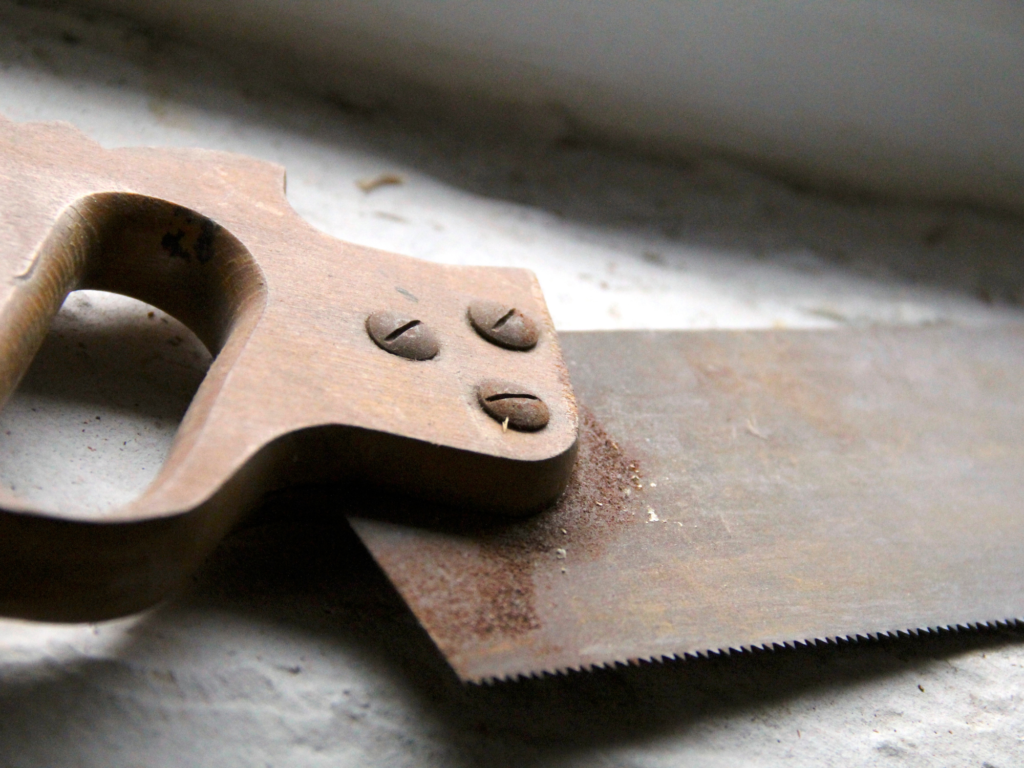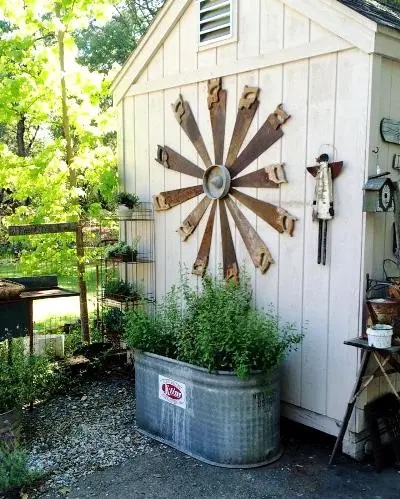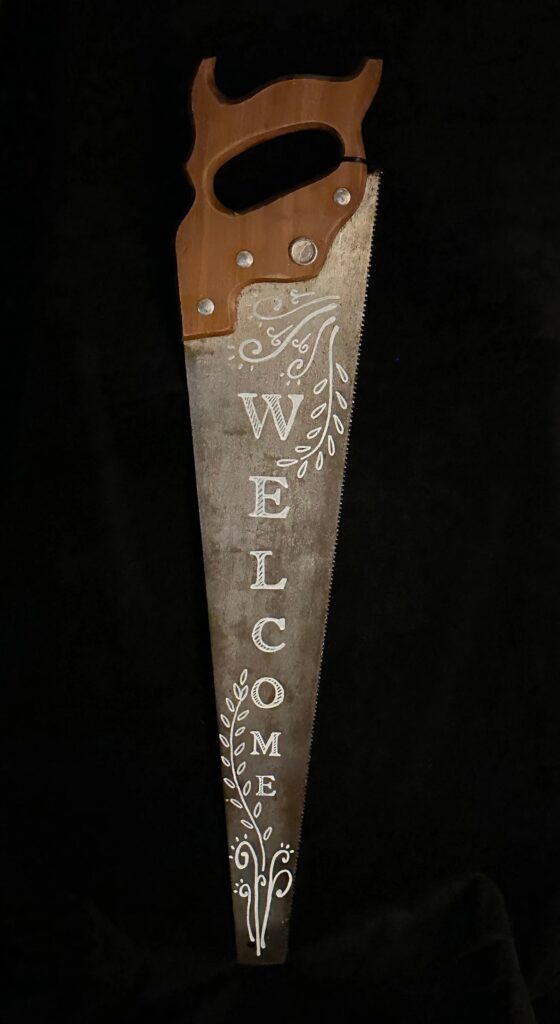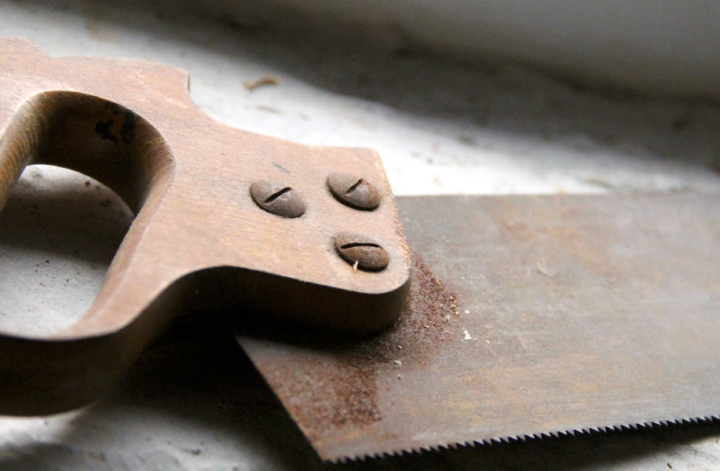There are vintage treasures to be found in every workshop. There’s the workbench itself, with its decades of paint spatters, nicks, chips and holes from drill incidents. There are the wooden or metal utility drawers, repurposed from a previous industrial life into storage for screws, nails and this-and-thats in the home workshop. And there are the tools. The wooden handled screwdrivers, the whetstone in its wooden box, folding rulers, the calipers, the eggbeater hand drill and the king of the workshop–the beautiful, durable handsaw.

The handsaw has always been the top of the workshop heap. When you are building something, the hammer, the drill, the screwdriver all have to wait until the saw cuts everything to the proper size. You can use louder, faster mechanical saws, but the technology that made the handsaw the tool that built our nation (literally) has not been outmoded. The handsaw made a hundred years ago can do the same job as the power saws tantalizingly arrayed at the front of every home supply big box store. It may take longer to get the job done, but it will definitely be more satisfying.
In addition to being workshop stalwarts, antique saws are also beautiful. The handsaw handle illustrates the form follows function principle. The curves and crannies all have a purpose for adjusting your grip, but they’re mighty attractive too. Some makers add carved details to make them even more wonderful.
All of which presents a conundrum: should antique handsaws be restored to continue their workshop lives or should they be repurposed to capitalize on their aesthetic charm?
The answer, as with most vintage and antique pieces, rests in your own priorities.
If you’re a woodworker, you definitely would stand firmly on the restore side. Restoring a vintage saw is an act of skill, patience and pride, so you’d only invest your time if you know your end product will give you a big time workshop ROI. Josh Burroughs wrote a great how-to post on makezine.com to get you started. And Erik von Sneidern, curator of the DisstonianInstitute.com provides invaluable links to saw resources (Disston saws in particular) as well as this fabulous essay, Why Bother with Handsaws?
If you would like to repurpose a beautiful old saw, you might have to do nothing more than put a couple of holes in the wall and hang it, because it has the patina of real life that can’t be faked. Katrina Lounsbury used a collection of vintage saws to create this focal point in her garden.

Saws become a garden focal point from fleamarketgardening.org
The craftosphere is dotted with ideas for turning saws into coat racks or what have you, but having been on the pointy tooth side of a saw more than a few times, it’s hard to imagine why you would put your fingers and/or your textiles near it. Many talented landscape and hand lettering artists use saws as their canvases. If you’re going to think of form following function, repurposing a saw into visual art makes way more sense than trying to manufacture a way to repurpose it into a household organizer.
This hand painted welcome saw would look wonderful on a workshop or shed.

Hand lettered saw by ArtByAndyMike on Etsy.
If you decide to try your hand at painting a vintage saw, illustrator Kelsey Phillips has a tutorial on prepping a saw for painting.
If you have a vintage saw in your life or vintage saw decor plans in your future, it’s always good policy with any antique to do a little internet snooping and see if what you have is either rare or collectible. It’s not that rare saws sell for enough to buy a villa in France; it’s that they have artifact value that would be prized and honored by a collector. There is no shortage of old saws in this world, your local Habitat for Humanity ReStore will likely be able to hook you up with any number of them at a very reasonable price, so if you do happen to have something kind of special, you can pass it on to someone who would appreciate it, confident that you will find a replacement saw for your decor or art project.






1 comment
another Interesting article. Thank you for tips and Great Ideas!
Thank you Laurie.